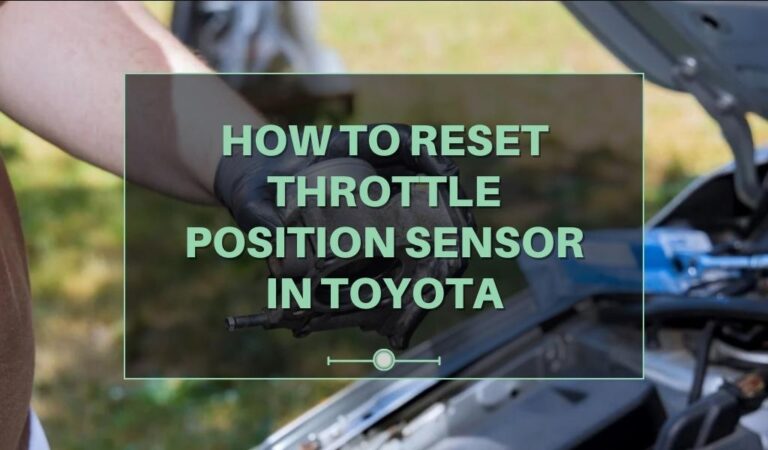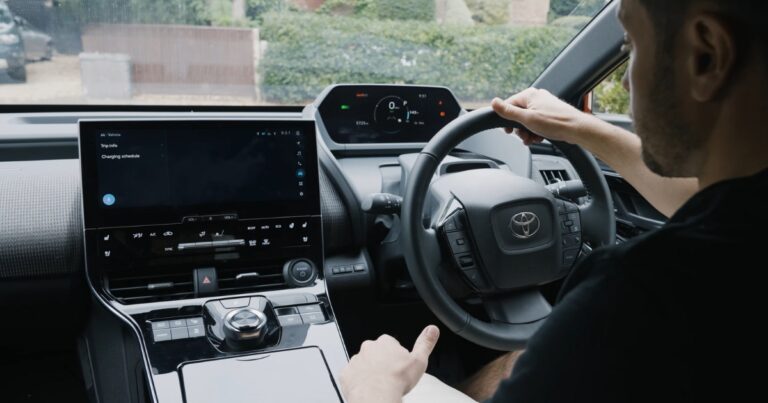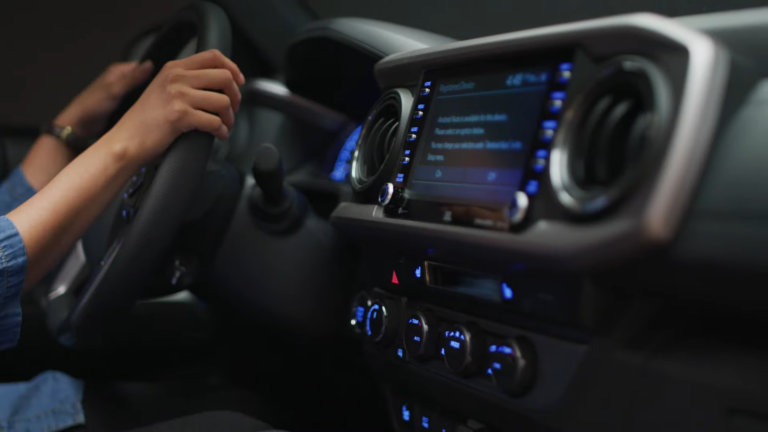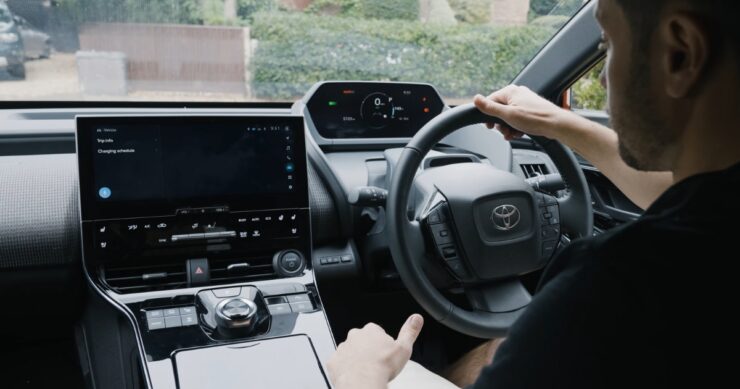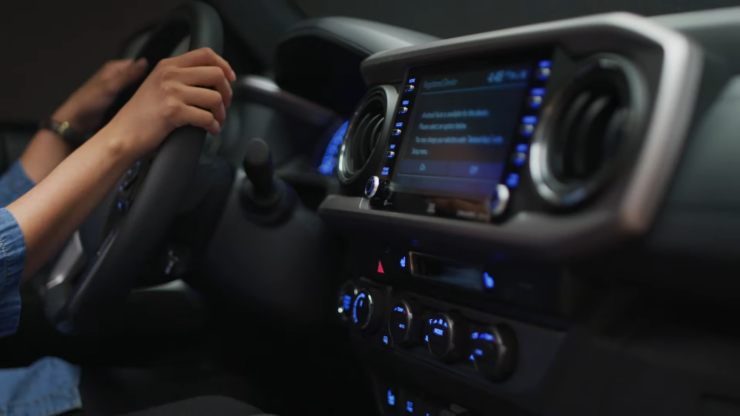It can be stressful to learn how to reset the throttle position sensor for Toyota, but I will show you everything you need to know in this article. You will learn about throttle position sensors, what to look out for, the costs involved, and much more.
Please continue reading below to find valuable tips, a step-by-step guide that I put together carefully, and a better insight into the topic. I will also mention common problems and solutions for each, which is valuable for any Toyota owner.
What Is the Throttle Position Sensor?
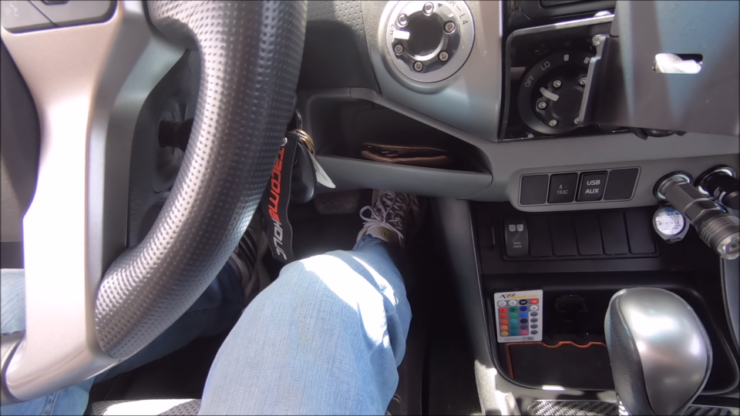
A throttle position sensor plays a significant role in the fuel efficiency, combustion, and overall optimal working of any car engine. Most drivers have no clue about this sensor, what it does, or where it is. The throttle position sensor will regulate how much air gets into the engine, which influences many aspects of a car’s functionality.
Physically it’s near the throttle body, by the butterfly shaft, but there are advanced versions as well. Some of the most common are the inclusion of a closed throttle position sensor or the drive-by-wire feedback design. The sensor will observe the acceleration pedal; the more it is depressed, the more air and fuel are combusted.
Normally, unless experienced with throttle position sensors, one wouldn’t notice its location within the engine. It resembles a simple black cap with a hose, usually not even easily reachable by hand – at least not without first removing certain components.
How Do Throttle Position Sensors Work?
Although throttle position sensors were different in older car models versus what you can find in cars today, their principle is the same. This sensor is either hard wired to the throttle or merely observing magnetic field variations to control the fuel-air mixture.
The hard-wired sensors would instantly know when the throttle is open wider while the modern version of the sensor only observes magnetic field changes. This physically small component in your car is what makes you go fast enough when you press down harder on your acceleration.
That is why it is not necessarily a fault if you floor the gas in a new luxury car, and it doesn’t instantly shoot off. It feels almost as if your car is asking you – are you sure you want to go this fast? Only then, in a few seconds, it starts going amazingly fast.
Bad Throttle Position Sensor Symptoms
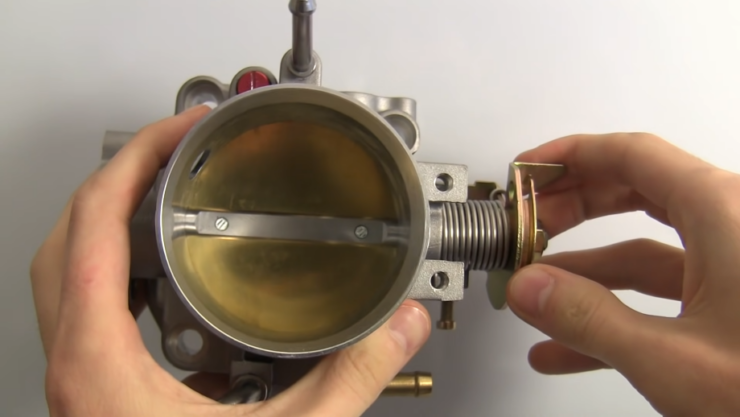
- The nightmare dash light comes on – the usually yellow or orange check engine. Every car owner should know that the check engine indicator is not specific and could indicate one problem or a host of problems. Hence you need to know the secondary symptoms equally well.
- While the car is idle, if you notice that the engine seems like it’s almost turning off by itself. Alternatively, the car may feel like it is moving difficultly, as if it was towed or struggling to move altogether.
- A bad throttle position sensor causes your acceleration to be inefficient. Heard stories about cars that can’t go above 60 MPH? While that doesn’t guarantee the throttle position sensor is gone, it can be a sign of it.
- The sensor being gone also means your electronic computer doesn’t know how much fuel or air to inject, which ultimately leads to no fuel efficiency. If you notice your car has a fuel consumption that would indicate you’re driving a truck, you should check the sensor immediately.
- Switching gears won’t go smoothly. You’ve gone up from second to third, but the engine seems almost stuck in second for another few seconds, even though you have floored the gas pedal meanwhile. While this could be a sign of gearbox issues, it can often be the throttle position sensor – something many car owners wouldn’t even think of.
How Much Does It Cost to Fix A Throttle Position Sensor?
A bad sensor most frequently needs complete replacement. While the part itself is inexpensive, the labor costs can be anywhere from a low $50 to a whopping $2000. Two thousand dollars, isn’t that crazy?
With some car models, it is standard. The reason is that not any car has a throttle position sensor at easy reach. For the DIY lovers, all the do-it-yourself mechanics will be glad to know that they won’t likely spend anywhere above $100. If your car is one of those that mechanics would charge thousands for, you need to be a very experienced DIY car mechanic.
Alternatively, in some cases, resetting the throttle position sensor on a Toyota is the cheaper option, especially if it’s not completely gone. How do you know? What do you do? Read on to find out!
How to Reset Throttle Position Sensor Toyota Effectively
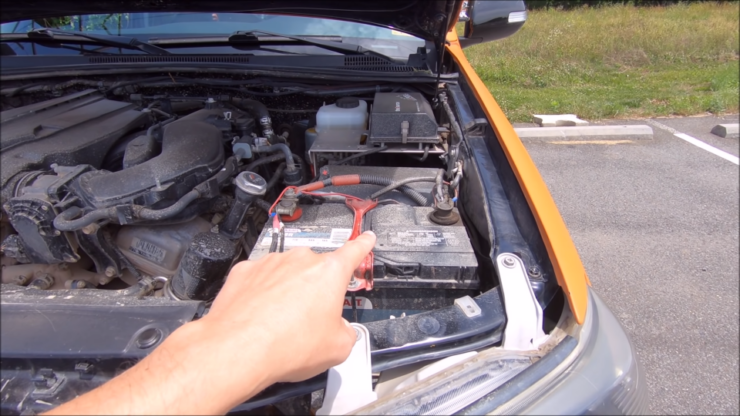
Before attempting the actual reset of a throttle position sensor, you must have diagnosed it correctly. While resetting a perfectly functional sensor shouldn’t theoretically change anything for the worst, it is not recommended. Sure, they may need resetting on battery replacement, but usually, mechanics do that for you, included in the price.
Once you are certain that the sensor is faulty and you want to attempt a reset before spending a dollar, here’s what you need to do. There are generally two ways you can go about it. The first involves disconnecting the negative lead from your battery for approximately five minutes. The second method is trickier and could easily go wrong – remove the engine control module fuse and then place it back.
Steps to Reset Throttle Position Sensor in Toyota
How to reset throttle position sensor for Toyota? You can attempt the following steps, but I can’t warrant it would work, and you should only use this guide at your own risk.
- Make sure the battery is disconnected for at least a few minutes. Ideally, leave it disconnected for five minutes.
- Reconnect the battery, but don’t attempt starting the car engine. If you start it, your idle may be all over the place, and sometimes that is scary.
- Put the key into the ignition.
- Turn the key to the electronic on – usually the step before ignition. This is when usually all lights come up on the dash, your GPS turns on, your center console lights up, and everything electric is functioning, but the engine isn’t running.
- Repeat steps 6 to 8 exactly three times.
- Taking around three to four seconds, slowly press down the gas pedal to the floor. Hold it there for two to three seconds maximum.
- As slowly as you pressed it down, release it, taking another three to four seconds.
- Wait for two seconds.
- After steps 6 through 8 have been repeated thrice, it is time to turn the key to the off position and take it out for about 10 seconds.
- In the case your idle is now stable, the process is completed. However, in some cases, you may need to repeat the process from steps 3 to 9 at least 3 more times, but usually, as many times needed until the idle is at normal levels and not jumping around.
- Do NOT disconnect the battery again for step 10, or you will lose all progress, and you have to take it all over from step 1.
For some Toyotas, the above does not work, especially if it’s from before 2005.
For models that don’t react to the above or are made before 2005, try the below steps.
- With the battery being connected, step into your car, be in the driver’s seat.
- Put the key into the ignition.
- Ensure all electric accessories are off, meaning AC, radio, lights – You must turn everything off completely.
- Please make sure you turn it to the electric on (before ignition), then back to off without taking the key out, then back to electric on for a few seconds, and then starting it up with the transmission being in neutral (manual) or park (automatic)
- Pull the emergency brake and leave it like that.
- Press the brake pedal and hold it.
- Select the first gear (manual) or drive (automatic), and wait for a few minutes without driving off.
- In the meanwhile, the car’s idle RPM may have gone up and down several times until it “learns” the new optimal value.
- You’re good to go – the throttle position sensor has just been reset!
Common Problems and Their Solutions about Throttle Position Sensor
01. Complete Disaster Scenario
The throttle position sensor is completely gone, rewiring, soldering, and resetting all have been attempted but failed miserably. The sensor is still not working well.
Solution
The truth is, you cannot attempt any other fix – or if you do, nothing fixes it anymore. You will need a replacement with a new throttle position sensor (or, on your own risk, a very well-reconditioned second-hand one).
02. Rough Idling or Shaky Idle
You now notice a rough or shaky idle after a new battery has been placed in the car, whether it was the mechanic replacing the battery or you did it on your own, as it’s usually straightforward.
Solution
The step-by-step work guide should work wonders for you, as it describes what you should try to do.
03. Illogical Fault or Sensor Working Intermittently
The sensor behaves strangely, it works or stops working correctly without any reason, and all common fixes have failed.
Solution
In this case, try to rewire the sensor – you may need a car electrician for that – and clean the throttle body, after which you can reattempt all fixes. If this fails, too, you may need a mechanic, as something else may be problematic too.
FAQ’s
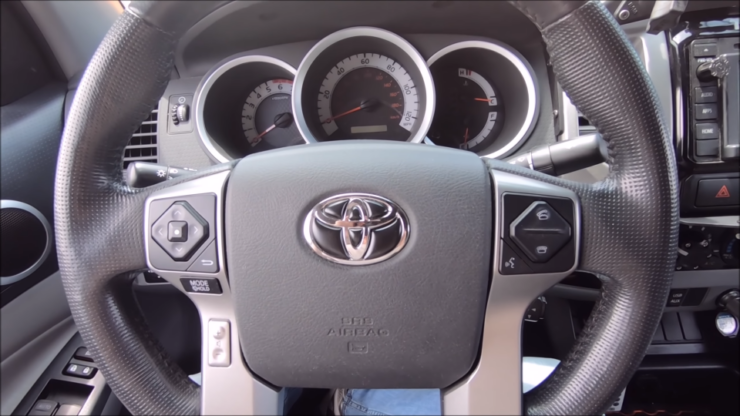
How Do I Reset my Electronic Throttle Control Manually?
Even for Toyota owners, there are so many ways that people have managed to reset their electronic throttle control manually. Things as simple as battery replacements or anything as common as spark plug operations were enough to make the sensor go crazy. Here are multiple ways, besides the above step-by-step guides, that you can try to reset your electronic throttle control manually:
- Start the engine as normal, wait long enough until it warms up to normal operating temperature. Wait for the fans to run the full cycle two times, and then You should leave the air conditioning on for a while.
- If the throttle body has sludge in it, all you need to do is clean it out and attempt any other how-to methods.
- Some people were able to reset it by driving on the freeway at 55 to 65 MPH, at which point they switched the gear into neutral and slowed the car down gradually until it reached a full stop.
- Drive it around town for just 10 to 15 minutes
- Turn the engine on, keep it in neutral, and floor the gas pedal for about 30 seconds, then release it, and repeat that for up to 5-7 times, depending on results. If that doesn’t fix it, try cleaning the throttle body and doing it again.
- With a warm engine, pull into a parking spot where you have some room in front of you, put the gear into first or drive (automatic) and slowly start driving. Drive around, park the car, stop the engine, restart it, then stop and start it a few more times.
Can you Clean a Throttle Position Sensor?
Yes, you can clean a throttle position sensor (TPS) using an electrical contact cleaner. However, it’s important to follow the manufacturer’s instructions and avoid touching the sensor with your fingers or any abrasive materials.
Regular cleaning of the TPS can improve its performance and help prevent engine problems such as stalling or hesitation. If the TPS is damaged or malfunctioning, it may need to be replaced. Always consult with a qualified mechanic or refer to the vehicle’s owner’s manual for guidance on maintenance and repair of the throttle position sensor.
Is Disconnecting the Throttle Position Sensor Dangerous?
Usually, disconnecting the throttle position sensor will force it to reprogram itself into normal working parameters. The ECU usually monitors different RPM values of the engine, which later influences your idling RPM. If your sensor had no issues, then disconnecting it is potentially dangerous as it may mislead you into thinking that your car developed a throttle position sensor fault. If you already had a bad idling experience or something else didn’t seem to work right, it is recommended to disconnect it. Surely, the next step is reconnecting it after a few minutes.
Is It Possible to Clean the Throttle Position Sensor?
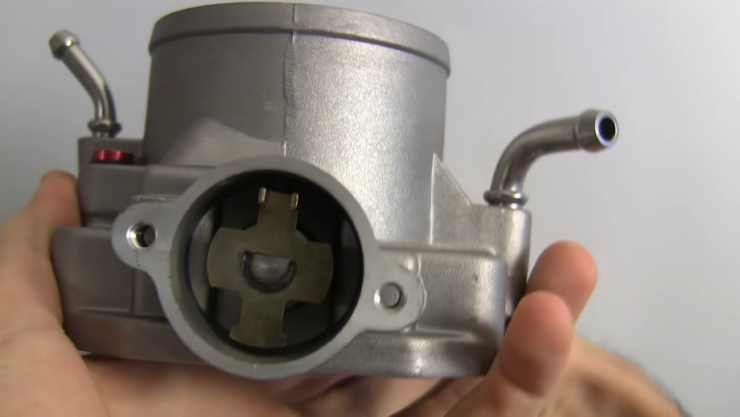
You should generally not clean the sensor itself – although it is possible for someone with more technical knowledge to do that. It is recommended to clean the throttle body instead and remove all dirt and unwanted “deposits” of grime, grease, or other materials.
While you won’t clean the sensor itself in most cases – although you could do, using a special fluid created for such a purpose – you can “clean” its operation by rewiring it and resoldering obviously loosened soldering points.
Tips for Maintaining Throttle Position Sensor
There aren’t much you can do about maintenance for your throttle position sensor, but a few points of precaution will work miracles:
- Ensure the throttle body is always free of sludge or any other dirt that may negatively affect its functioning.
- Make sure all wiring is top standard, that all cables are in perfect working order.
- Make sure your ECU is not faulty.
- Make sure your throttle body is not faulty – if it is, replace it.
- Try to avoid using a second-hand throttle position sensor to replace a bad one. While it may be cheaper, it could mean that you didn’t solve anything.
Verdict
In this article, you’ve learned how to reset the throttle position sensor Toyota. When all resetting fails, you will probably have to attempt a rigorous cleanup, a full rewiring before giving up on the sensor to choose a replacement.
DIY replacement is the best option for certain Toyotas, especially if your sensor is at sight and doesn’t require an experienced mechanic to dismantle parts under the hood. Alternatively, an experienced mechanic is your best option.
Related Posts:
- How To Reset Oxygen Sensor of Car/Truck in 2024 -…
- Pedal Commander VS Sprint Booster 2024 - Pick the…
- 14 Must-Know Facts About Speed Sensor ABS: Enhancing…
- How To Reset Toyota Entune System | Simple & Easy Steps 2024
- How to Reset Maintenance Light on Toyota Tundra -…
- How to Reset Toyota Yaris Maintenance Light in 2024…

